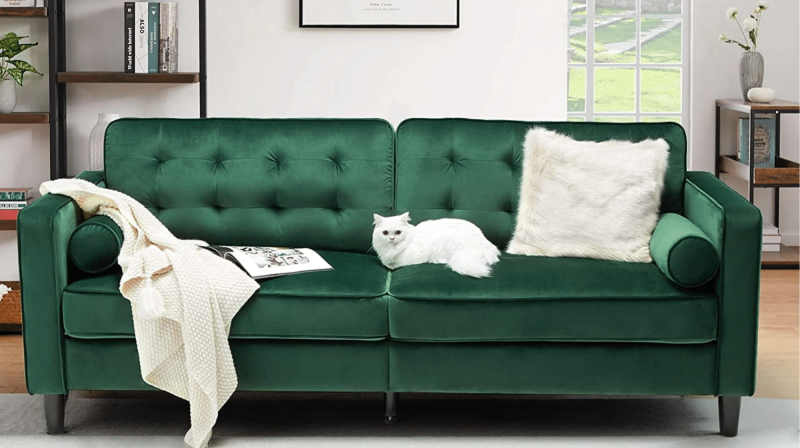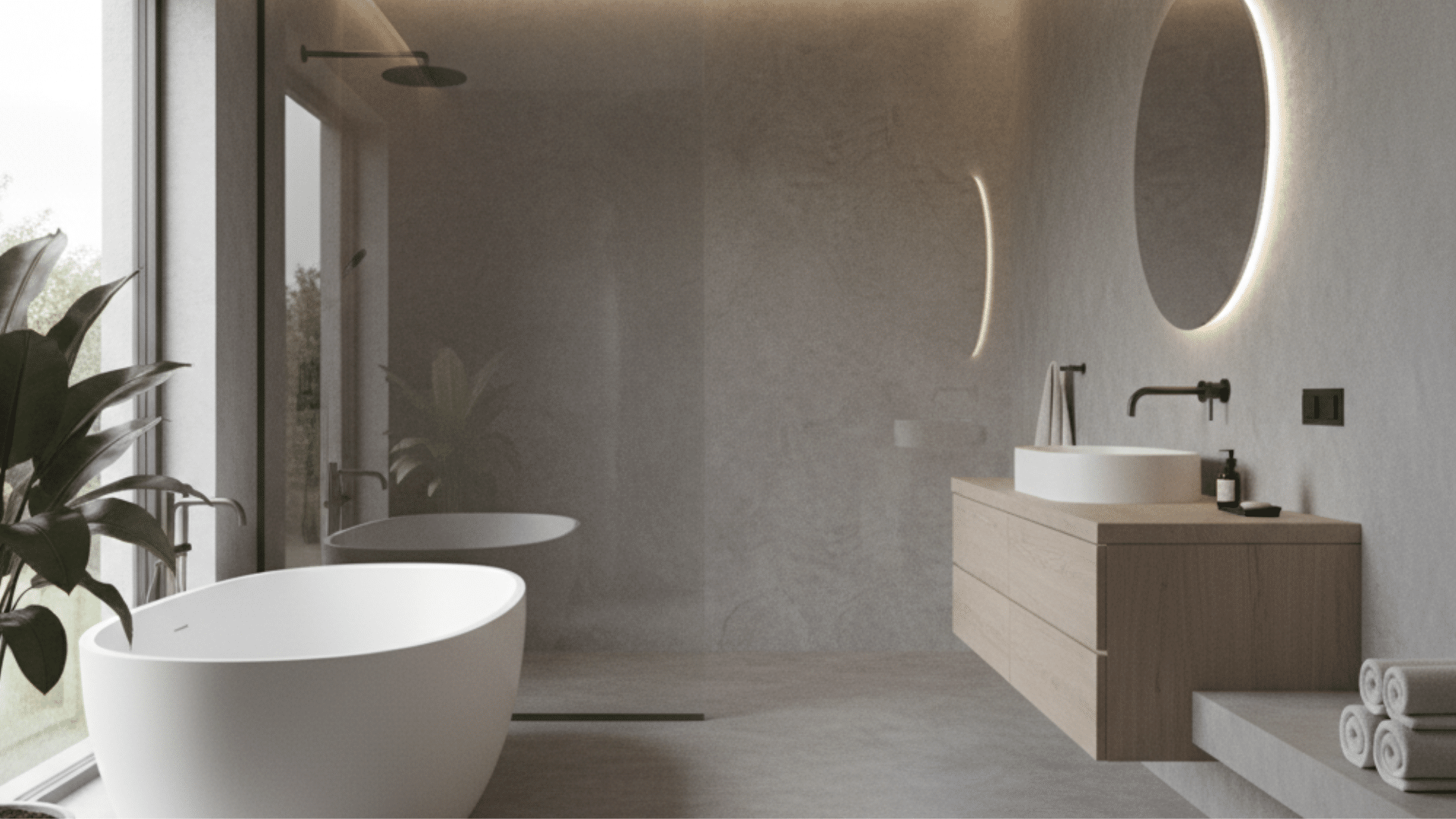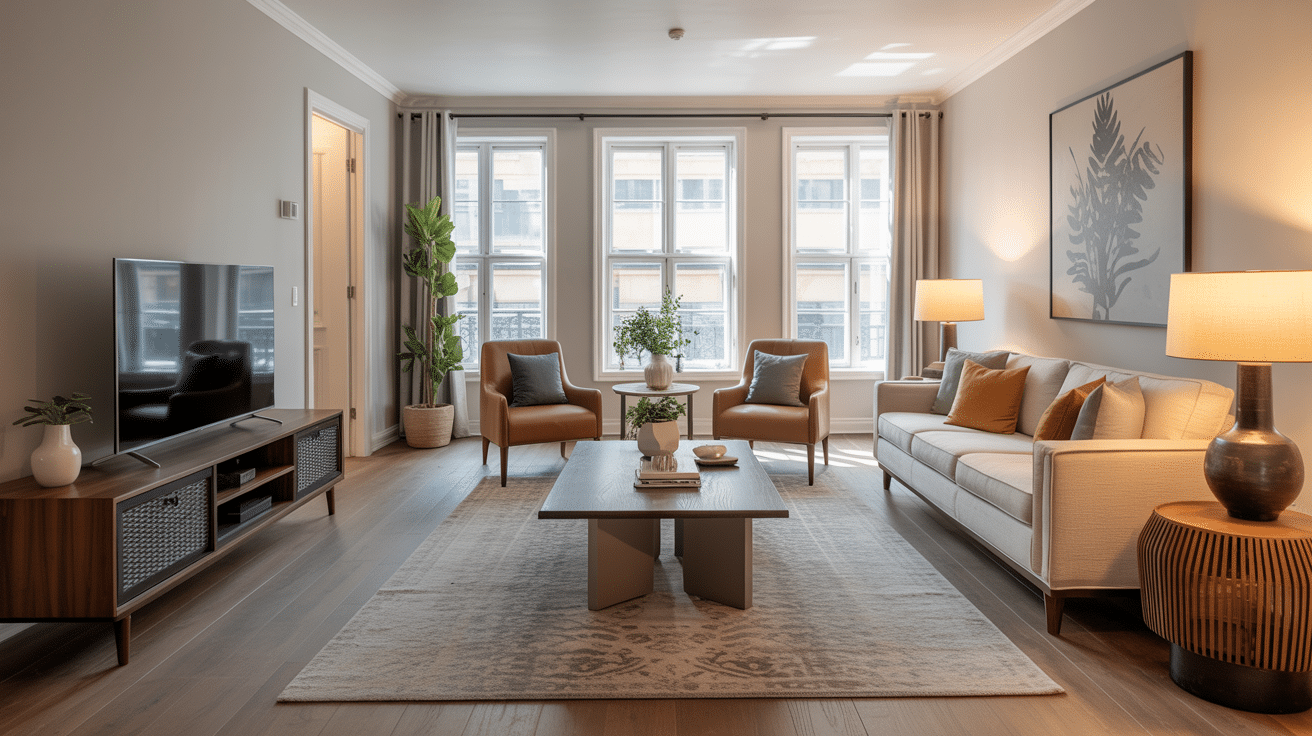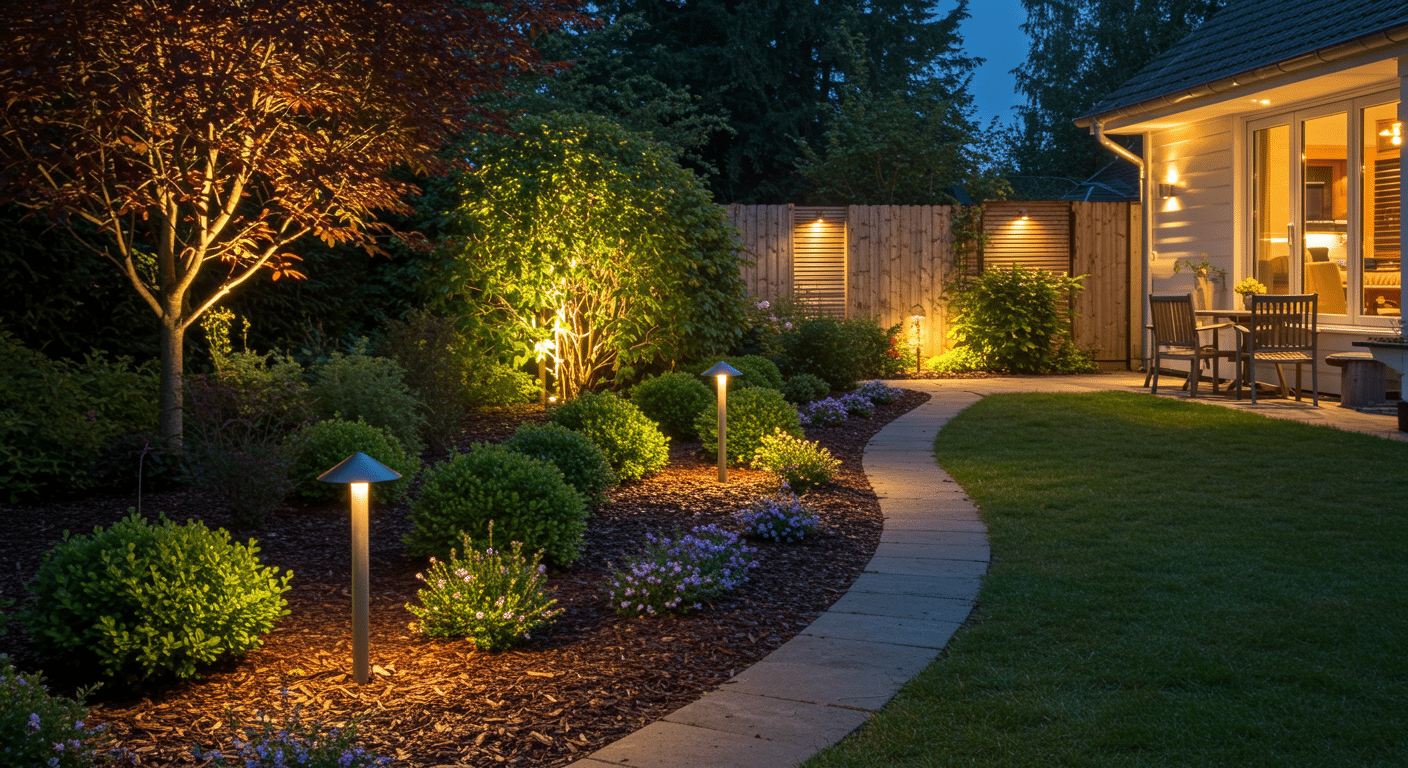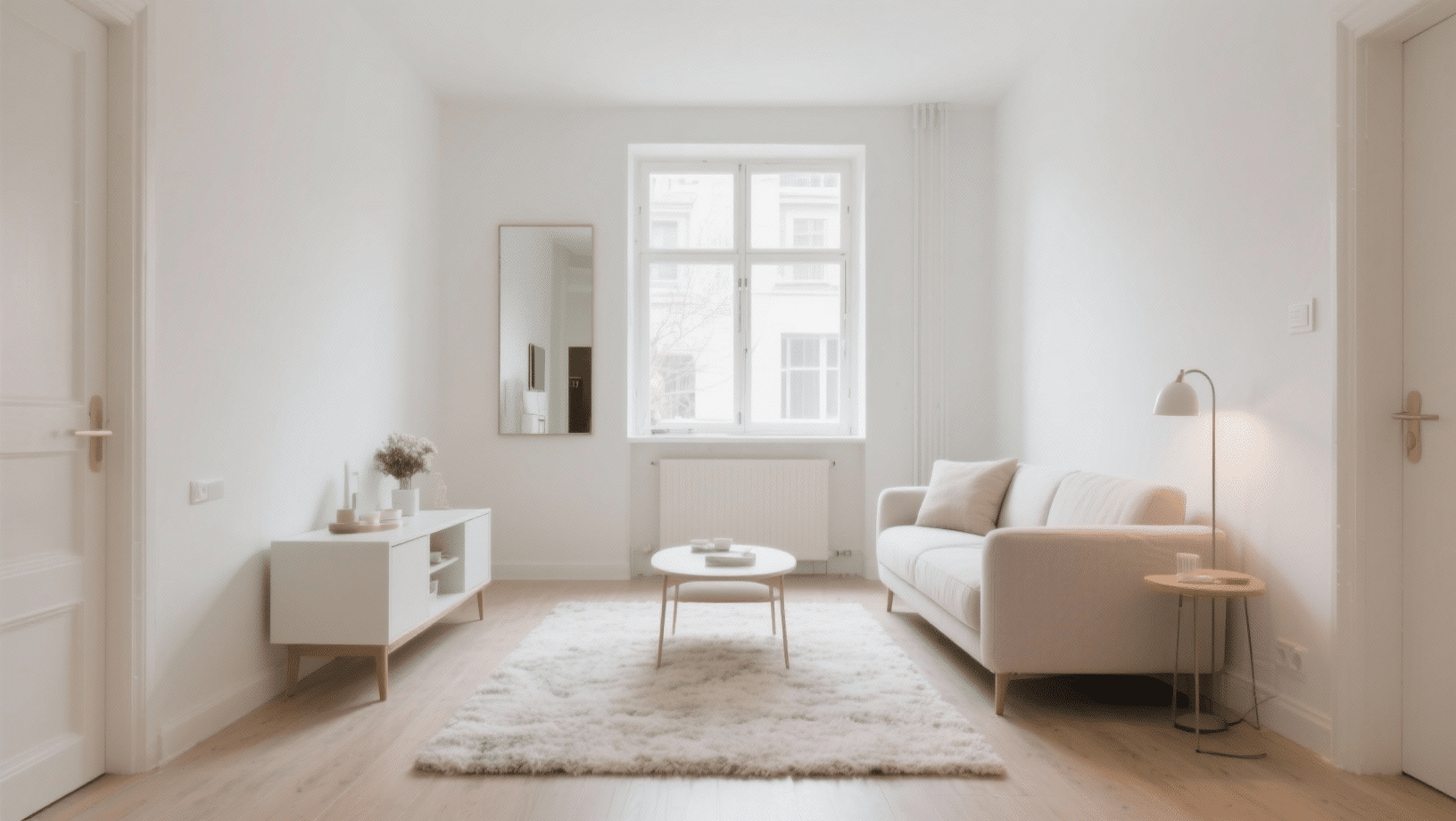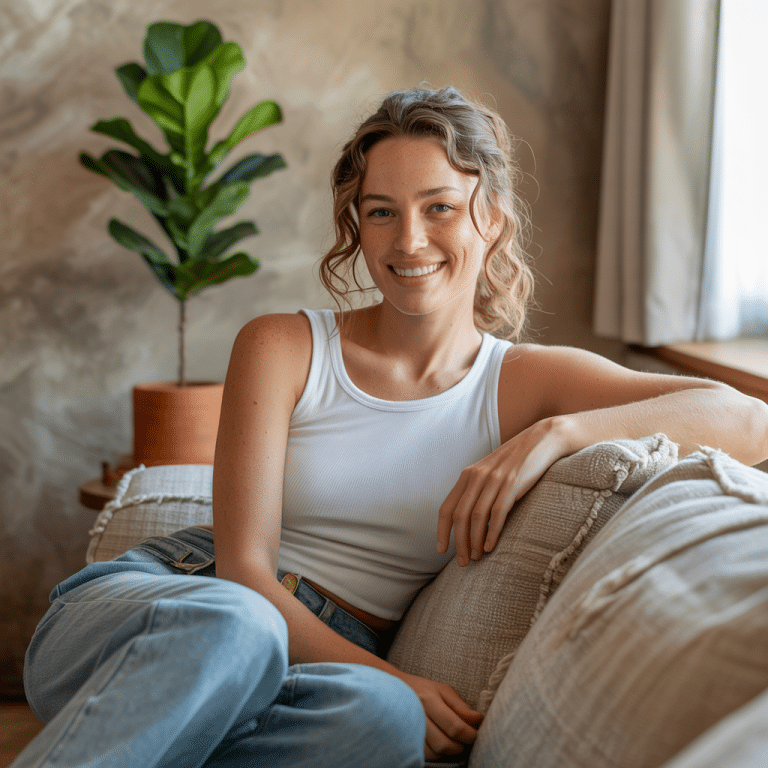Sometimes, choosing between chenille vs velvet feels impossible. Both fabrics look stunning, but they’re entirely different when it comes to how they feel, last, and fit into your daily life.
I used to think fabric was just fabric, until I made some costly mistakes that taught me otherwise.
Understanding these key differences will save you from buyer’s remorse and help you pick the perfect material for your space.
Let me walk you through what I’ve learned about these two popular options so that you can make the right choice for your home.
Broad Consideration: Chenille vs Velvet
Before choosing between Chenille vs Velvet, I consider two main things about my space. First, do I want casual comfort or formal style? Second, how will I use this piece? High traffic areas, kids, or pets all matter.
Chenille gets its name from the French word for caterpillar, which makes sense when I feel its fuzzy texture. It’s typically made from cotton, acrylic, or rayon blends.
Velvet has been a luxury fabric for centuries, originally made from silk but now often using synthetic materials. The dense cut-pile weaving creates that signature soft surface I love touching.
Factors to Help You Decide
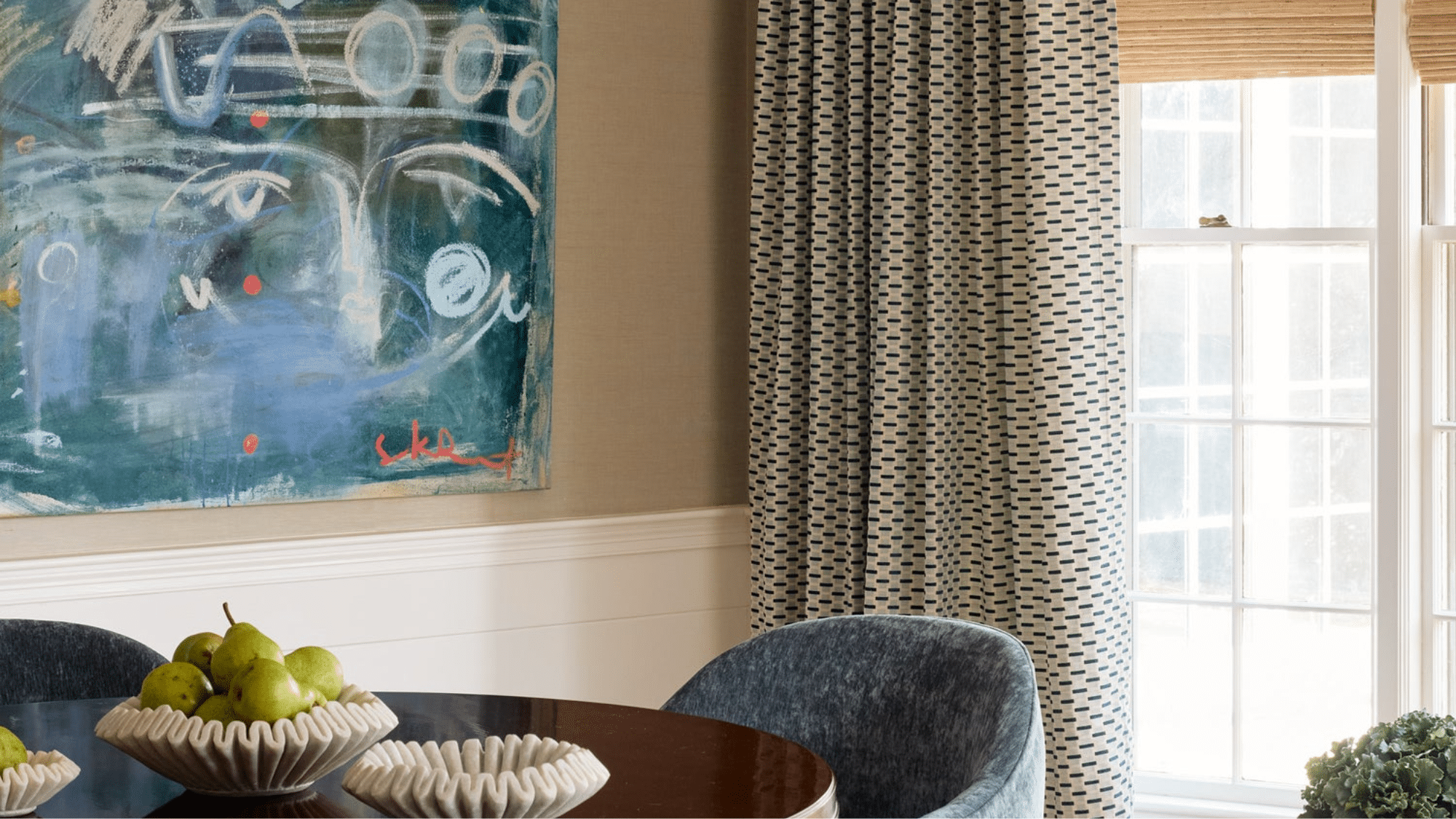
When I’m choosing between chenille vs velvet, I consider five key factors that have saved me from costly mistakes over the years.
Getting this decision right the first time beats having to replace expensive furniture later, so I always walk through these considerations before making my final choice.
- Traffic and usage patterns: High-traffic family areas require different fabrics than formal spaces that are used only occasionally.
- Style of your room: Decide if a cozy vibe or upscale elegance is what you’re aiming for. This choice affects everything else in my decorating decisions.
- Budget constraints: I assess what you can afford, including long-term costs such as professional cleaning and potential replacements down the road.
- Maintenance willingness: Some weeks, one may barely have time to vacuum, let alone deal with special cleaning requirements. Be honest about how much time you are willing to spend on upkeep.
- Color and texture preferences: I consider the colors and textures that make me happy in my space, since I’ll be living with this choice for years to come.
How Chenille Differs from Velvet
Understanding the key differences between chenille vs velvet helps me make better choices for my home.
From texture and appearance to cost and durability, these fabrics have distinct characteristics that affect how they work in my space.
Texture & Feel
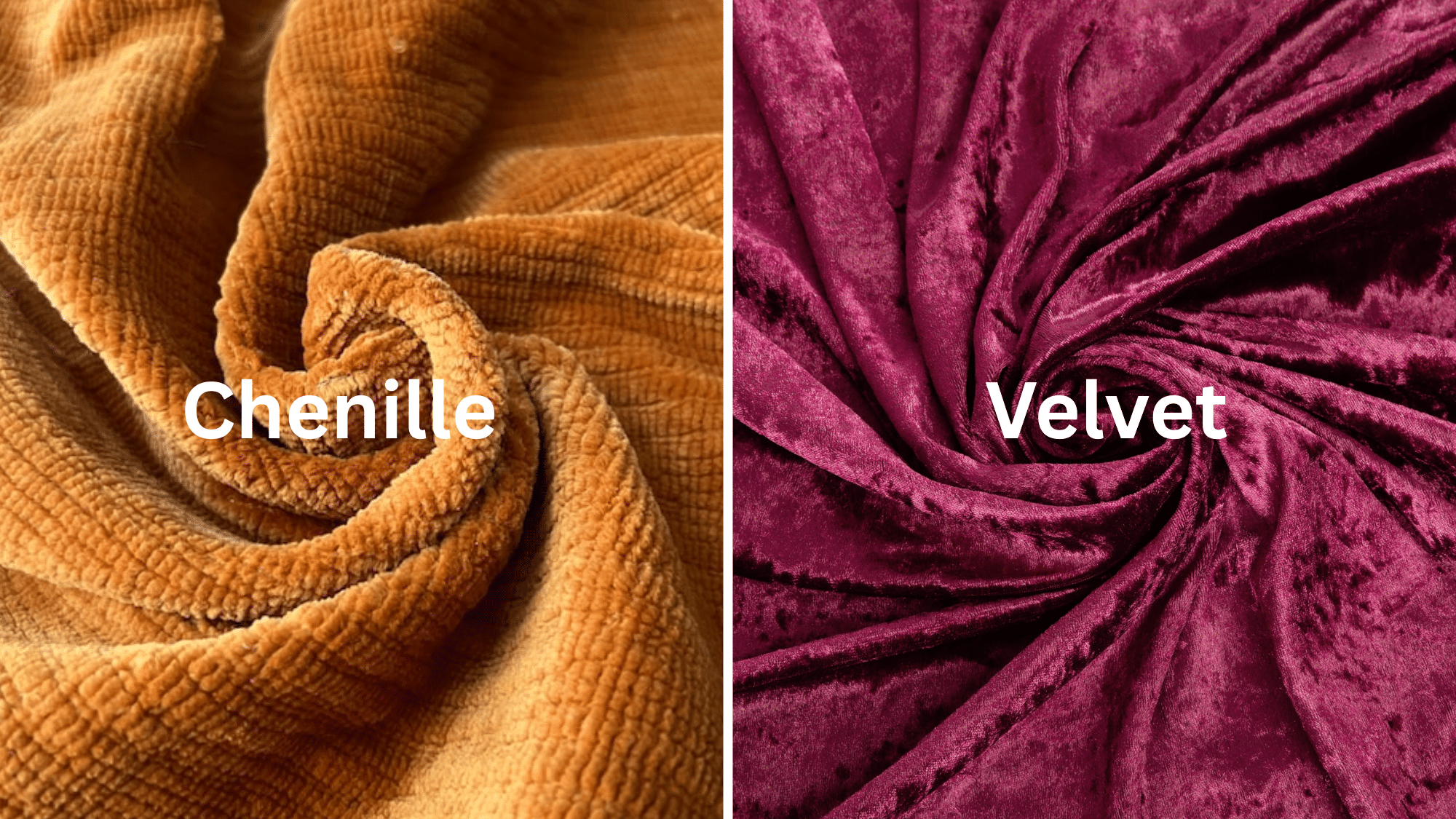
When I run my hand across fabric, texture tells me everything about how comfortable it’ll be in my daily life. This physical sensation determines whether I’ll want to curl up on my sofa or admire it from a distance.
- Chenille: Chenille feels like a soft caterpillar under my fingers. The fuzzy, textured pile creates this wonderful tactile experience that makes me want to keep touching it. It has this cozy, inviting quality that immediately puts me at ease.
-
Velvet: Velvet feels completely different when I touch it. The surface is incredibly smooth and dense, with a cool sensation against my skin. It has this plush, sleek quality that feels sophisticated and refined in my hands.
Appearance & Sheen
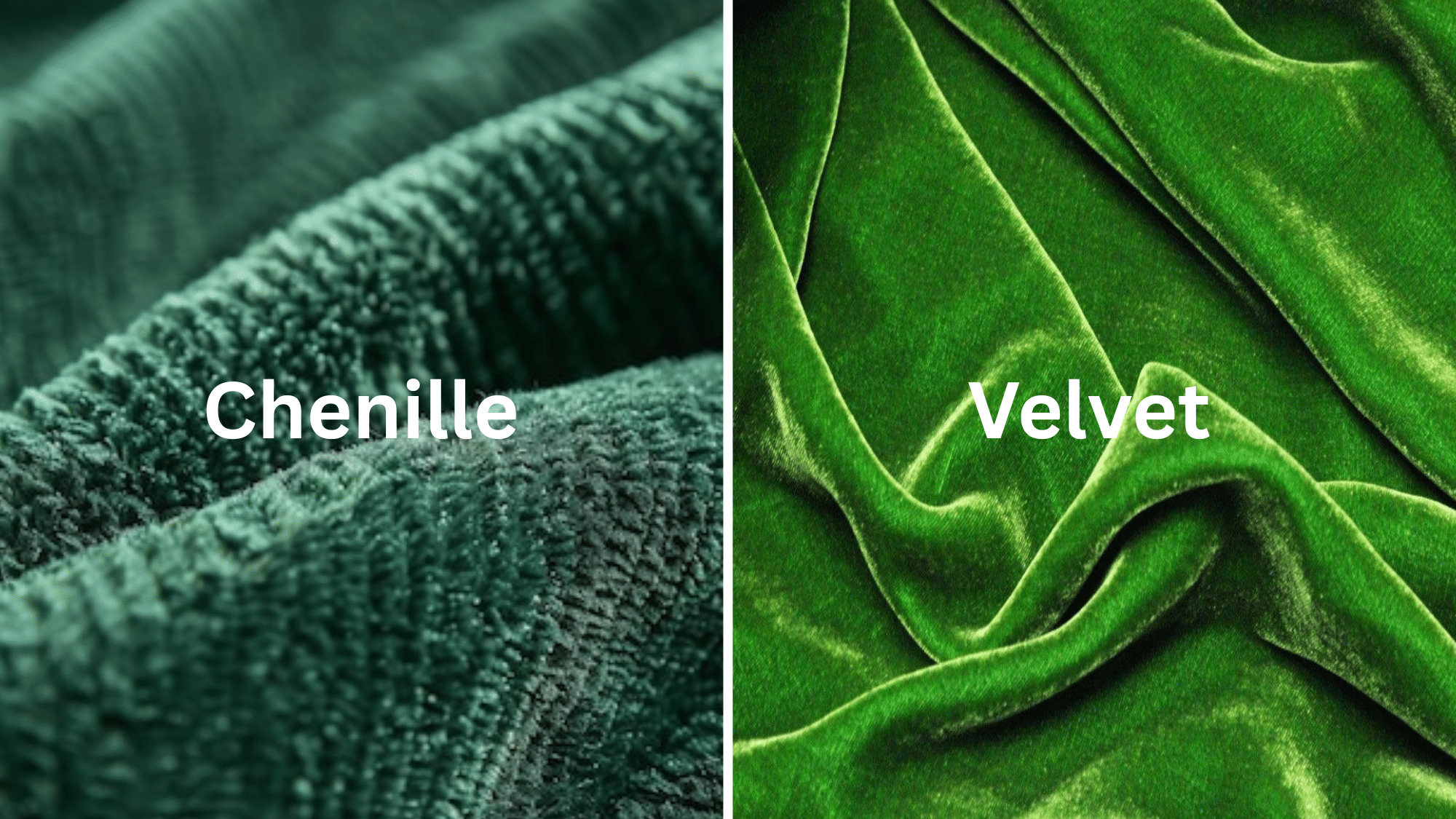
Light interaction dramatically changes how fabric looks and feels in my space. Some fabrics reflect light for drama, while others absorb it for comfort, completely transforming my room’s atmosphere throughout the day.
| Aspect | Chenille | Velvet |
|---|---|---|
| Light Response | Absorbs light, matte finish | Reflects light, responds to changes |
| Sheen Level | Subtle or no sheen | High reflective sheen |
| Room Mood | Cozy, lived-in feeling | Formal, striking atmosphere |
| Visual Impact | Understated, welcoming | Eye-catching, dramatic |
| Guest Experience | Comfortable, casual | Impressive, luxurious |
Construction & Durability
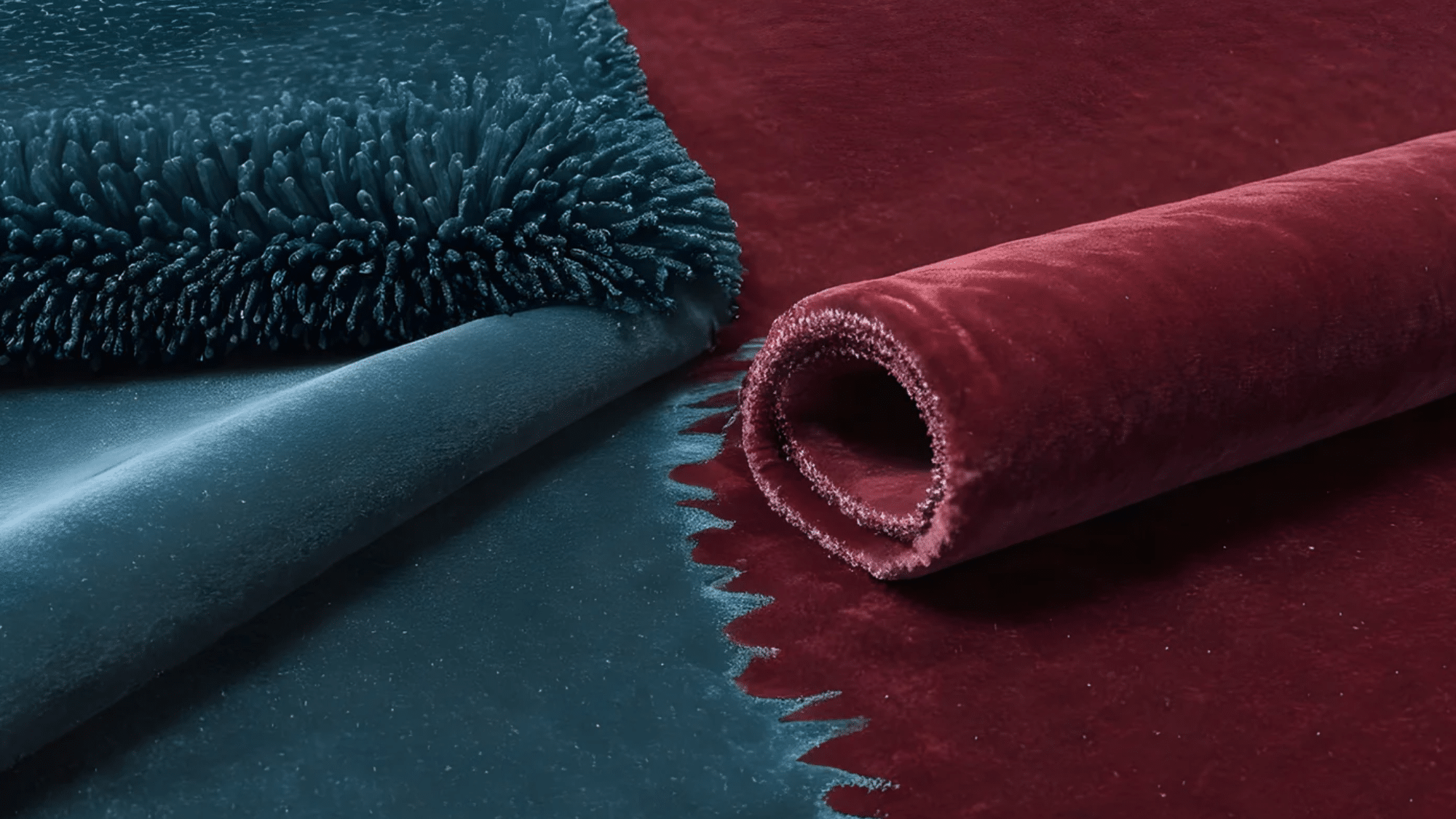
Understanding how fabric is made helps me predict how it’ll hold up to my lifestyle.
Construction methods determine whether my furniture will look great for years or start showing wear after a few months of regular use.
-
Chenille: I’ve learned that chenille uses tufted yarn that’s brushed to create its signature pile. While it offers moderate resistance to wear, I need to be realistic about its limitations in high-traffic areas of my home.
-
Velvet: Velvet’s tightly-woven cut pile construction impresses me with its density. Although the pile can be crushed under pressure, the overall durability usually holds up well to regular use when I choose quality pieces for my space.
Budget Breakdown of Chenille and Velvet
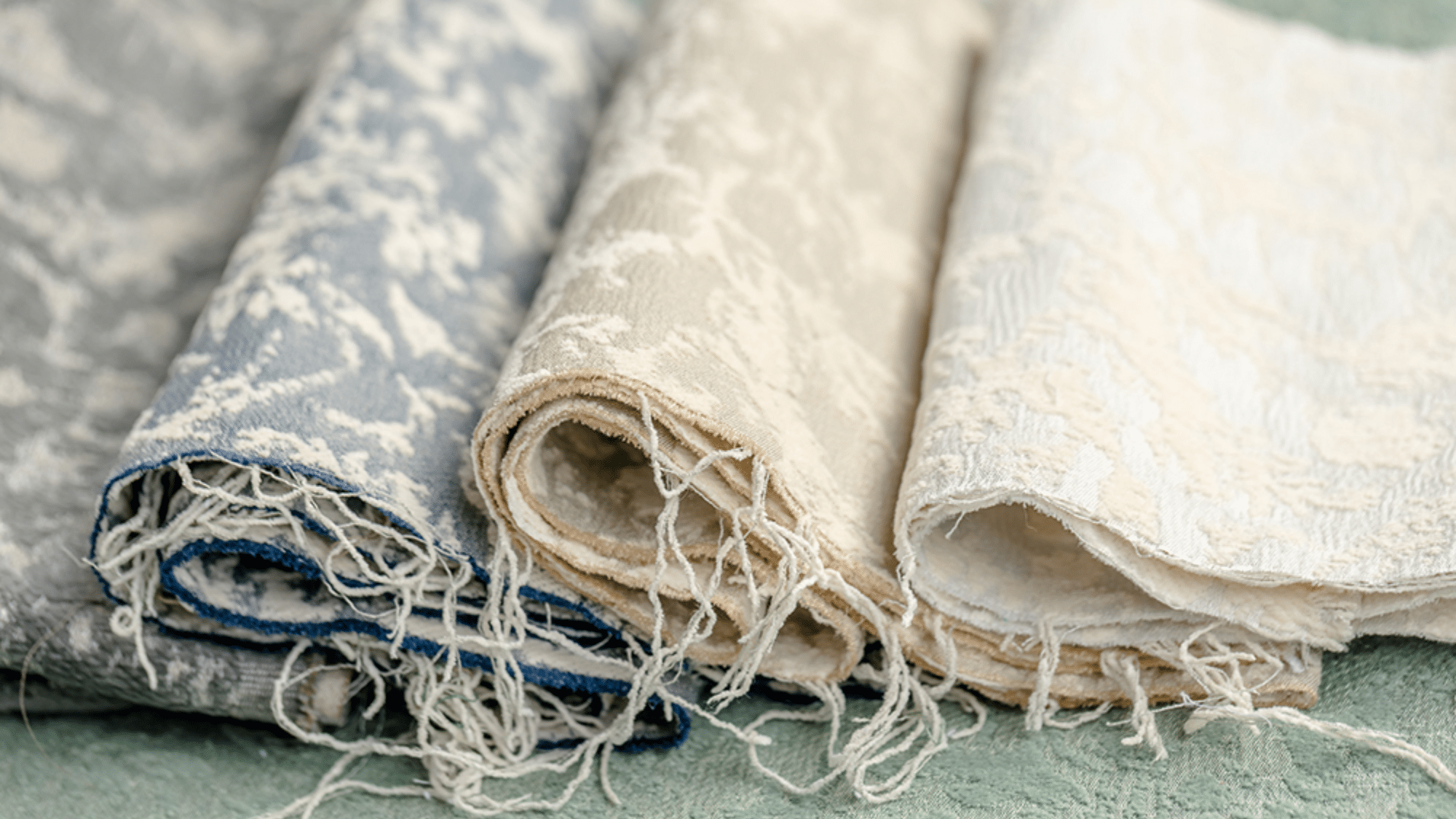
Budget considerations matter when choosing between chenille and velvet.
Fiber content, manufacturing complexity, and brand positioning create significant price differences, though synthetic options have made both fabrics more accessible for various budgets.
- Standard retail fabric (home decor use): $10 to $25 per yard, approximately
- Upholstery-grade chenille: $20 to $40 per yard, approximately
- High-end designer chenille: $50+ per yard approximately
- Cotton velvet (mid-range): $30 to $60 per yard, approximately
- Silk or mohair velvet (luxury-grade): $80 to $200+ per yard, approximately
Application of Chenille and Velvet in Daily Life
Choosing the right fabric isn’t just about looks; it’s about matching how I use my space.
I’ve learned that chenille and velvet each work better in different situations, and picking the wrong one can be costly.
1. Upholstery
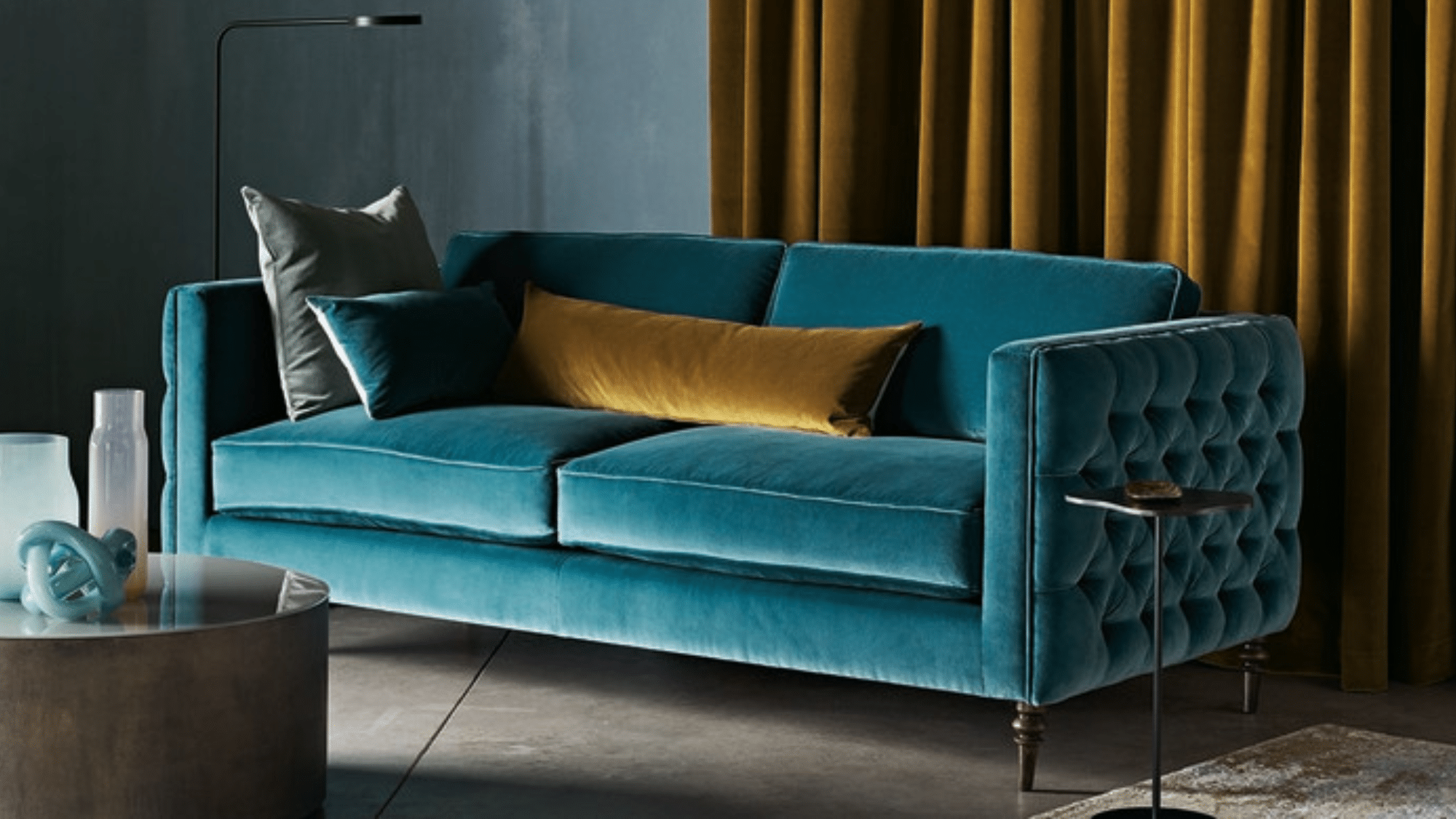
Chenille suits everyday furniture like sectionals and recliners with its soft, durable feel, perfect for casual spaces. It handles frequent use well and adds cozy texture.
Velvet is better for formal pieces like tufted sofas or accent chairs, bringing luxury and visual richness. While chenille is ideal for comfort and practicality, velvet shines in decorative, low-use settings where elegance takes priority.
2. Throw Pillows
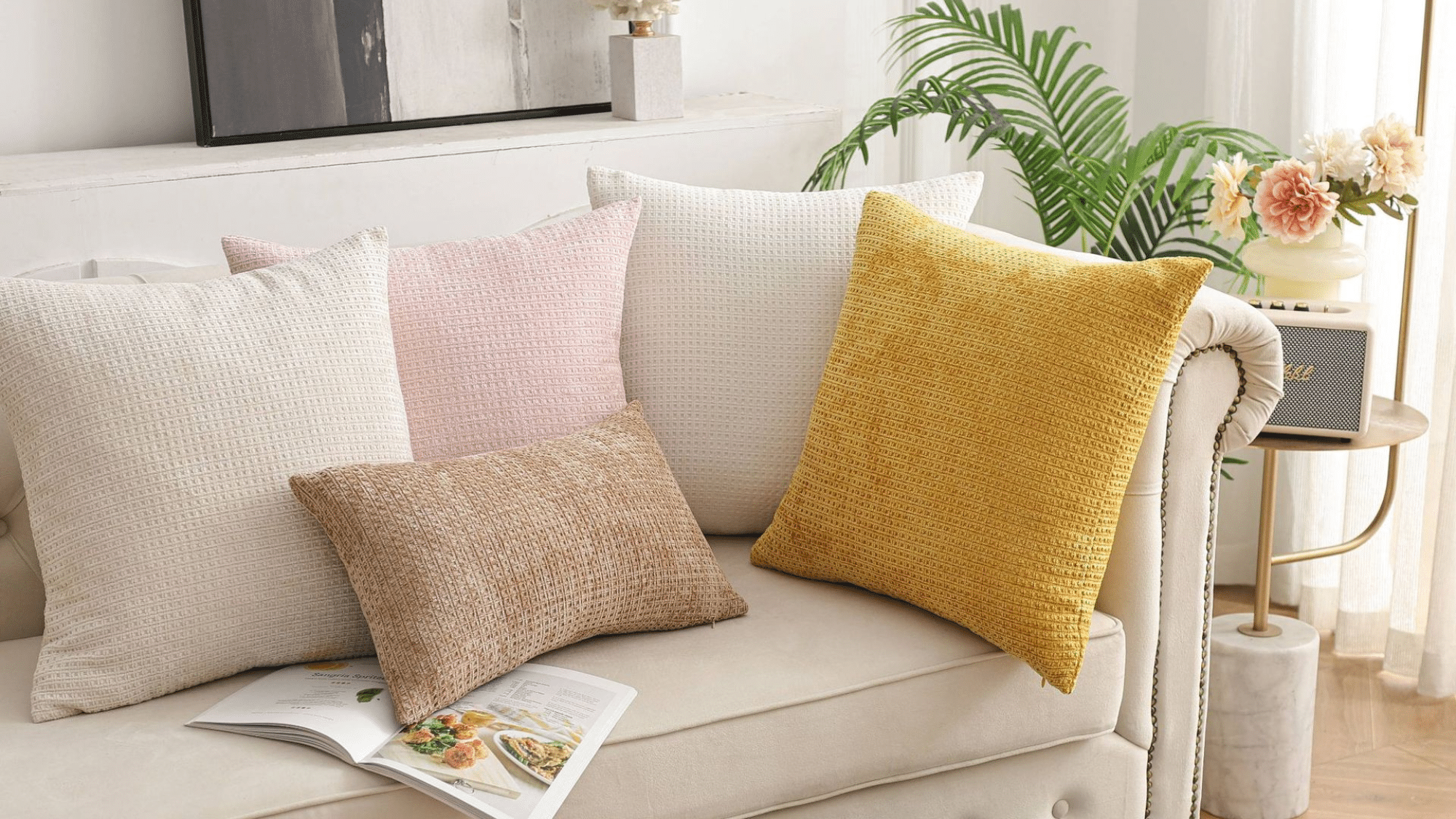
Chenille pillows add soft texture and are easy to clean, making them great for daily use on family sofas. They pair well with casual fabrics like cotton.
Velvet pillows, though more charming, work best as visual accents and require delicate care. Velvet amplifies neutral furniture but isn’t as practical for frequent use. But in Chenille vs Velvet, Chenille wins for comfort and maintenance.
3. Curtains and Drapes
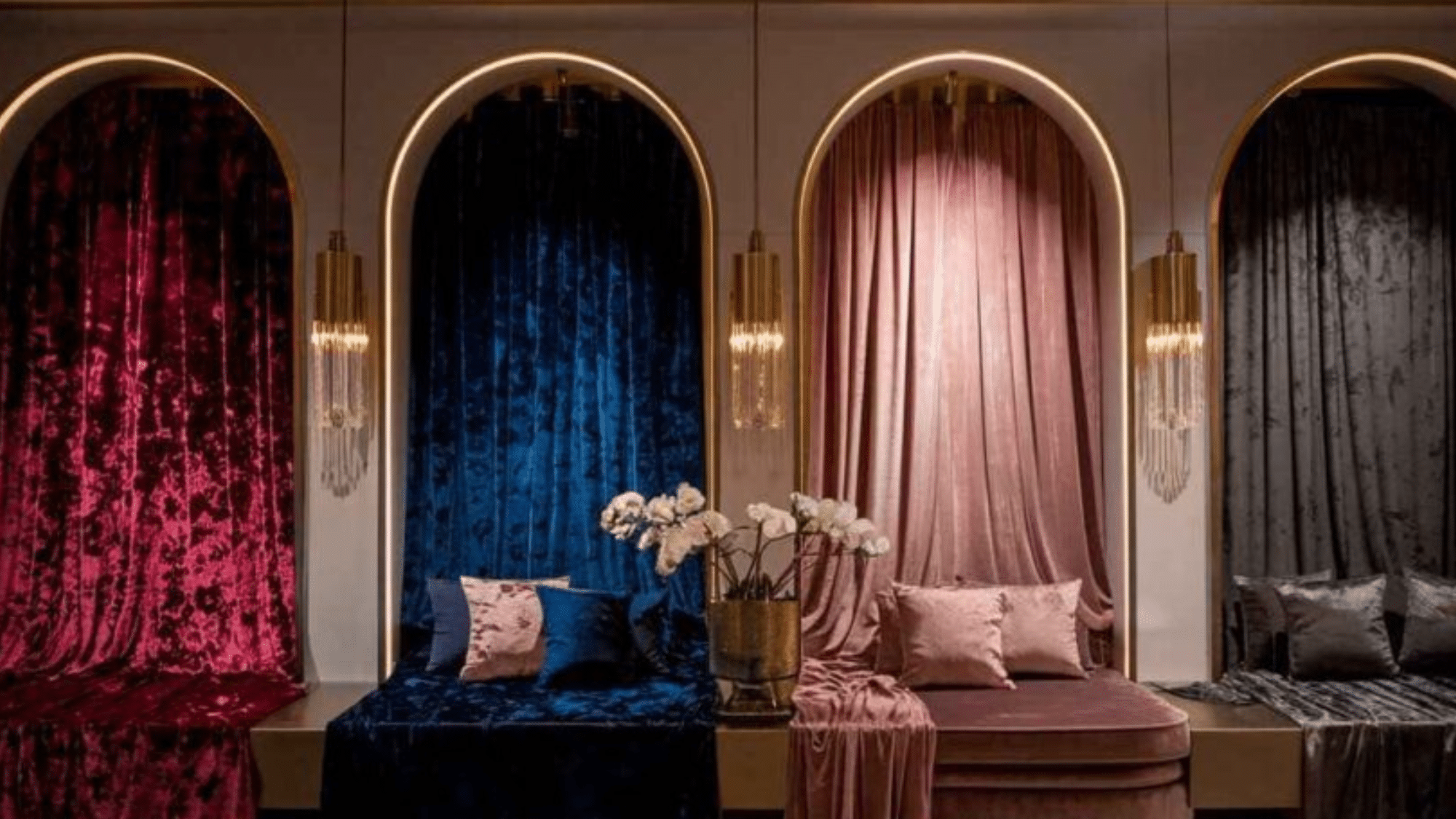
Chenille curtains soften modern interiors and offer a relaxed, cozy feel. They’re ideal for casual spaces, but don’t block light as well.
Velvet drapes are heavier, dramatic, and perfect for formal rooms, offering elegance and excellent light control. While chenille suits relaxed décor, velvet delivers a polished, luxurious finish where impact matters.
4. Bedding
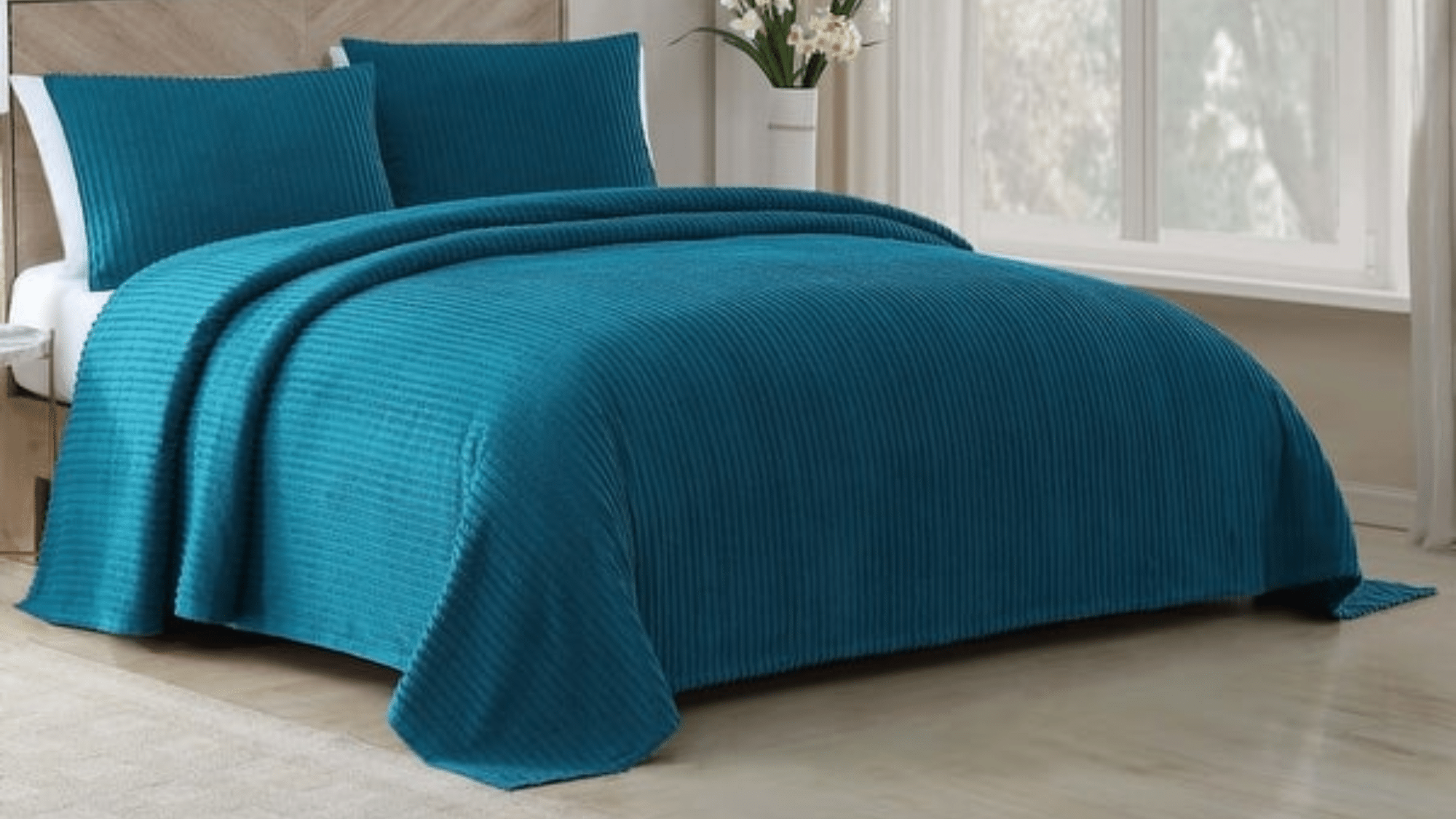
Chenille bedspreads are soft, breathable, and perfect for everyday use in guest or kids’ rooms. They provide comfort without overheating. Velvet is better as a decorative layer, like a throw or accent pillow, adding luxury without sacrificing sleep quality.
For practical bedding, chenille is preferable; velvet works best in small, stylish touches.
5. Statement Pieces
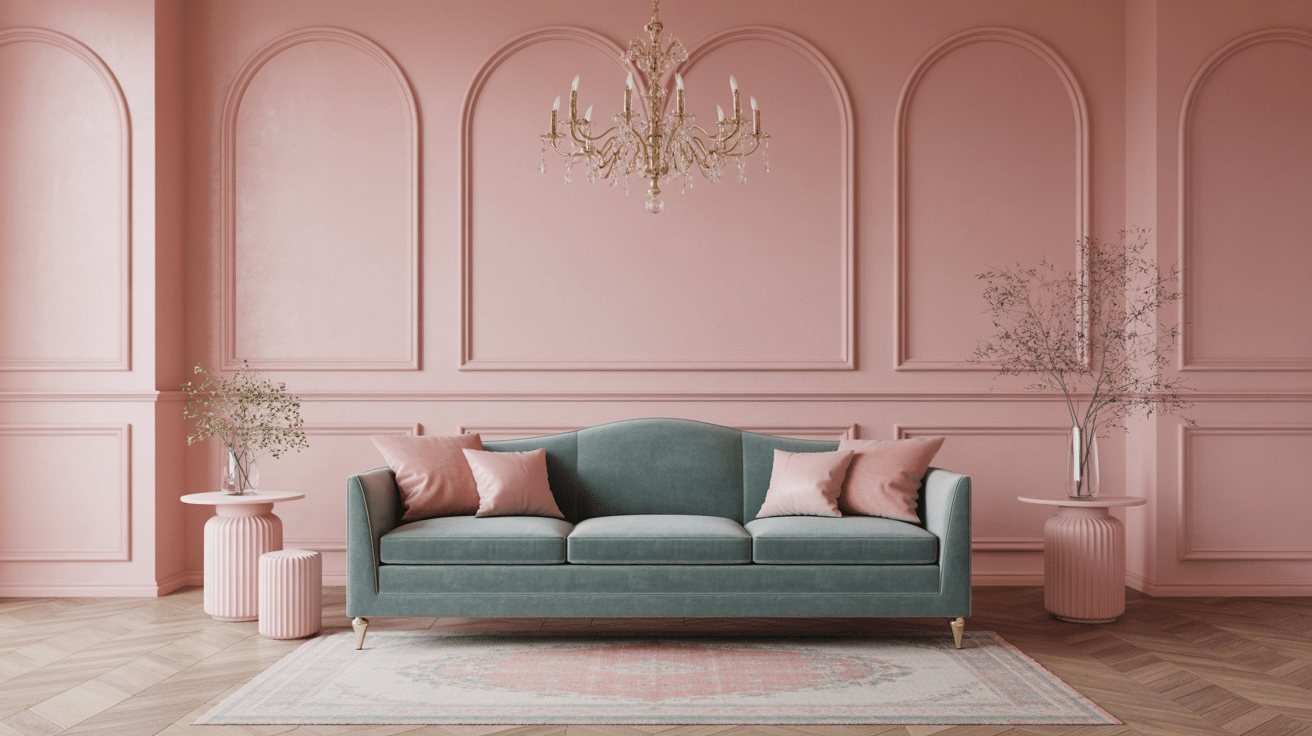
Chenille creates cozy, casual focal pieces, such as ottomans or reading chairs, that blend seamlessly into relaxed rooms.
Velvet, with its rich sheen and plush feel, turns furniture into standout features; ideal for accent chairs or chaises in formal settings. It draws attention and adds drama, making it the better choice for bold design statements.
Maintenance & Cleaning
Chenille is easier to maintain with simple vacuuming and spot cleaning, though it can snag or stretch with rough handling. For busy lifestyles, chenille offers the more practical, low-maintenance option.
Velvet requires expensive dry cleaning, gentle care to prevent pile damage, stain protection, and shielding from sunlight to avoid fading.
Here are a few go-to maintenance tips that keep both fabrics looking their best:
- Vacuum gently using upholstery attachments to avoid damaging the pile
- Rotate cushions regularly so wear patterns stay even across all surfaces
- Blot spills immediately instead of rubbing them deeper into the fabric
- Always spot-clean according to the manufacturer’s label instructions before trying anything else
- Consider professional cleaning for velvet pieces to maintain their luxurious appearance
Final Thought
Choosing between chenille vs velvet comes down to your lifestyle and space needs.
I’ve found that chenille works best for casual, family-friendly environments where comfort and easy maintenance matter most. Velvet shines in formal settings where luxury and visual impact take priority.
Think about how you live in your space. Do you need something that handles daily life, or are you creating a showpiece room?
Consider your budget, maintenance willingness, and style goals. Once you match the fabric to your real needs, you’ll love your choice for years to come.
What’s your next step? Measure your space and start shopping with confidence.


